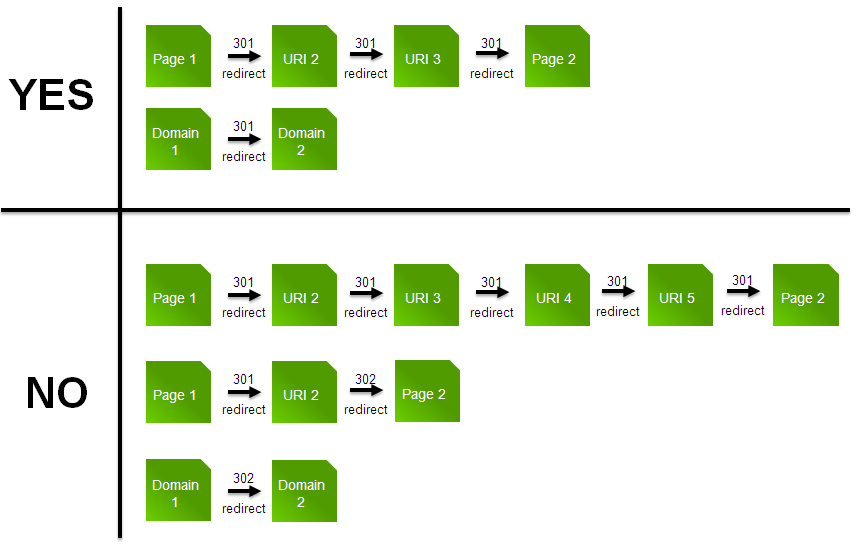Redirects Do’s and Don’ts
Know about what you can do, to have user, browser and search engine friendly redirects.
| Do’s |
Don’t |
- use max 3 redirects in a chain. Avoid useless hops.
- Only use one type of redirect in a chain
- No penalties/limits on number of redirects on a domain.
- Limit redirect lists by using rules.
- Use 301 Redirect to redirect old URIs with SEO value to new URIs and in case of canonicalization
- Only use 302 Redirects on a domain or between subdomains on a domain.
- 301 Redirects are forever. Keep controlling them.
- Make smaller chunks of redirects if you want to move page structure.
|
- More than 5 redirects in a chain (HTTP/1.0 Browser Limits)
- More than 3 redirects in a chain (Google Bot Limits)
- Mixing up 301 and 302/307 redirects. (Confusing for Google Bot)
- Long redirect chains with useless hubs (Bad Page Speed and Bad User Experince)
- Big lists of redirect rules (Bad Page Speed and Bad User Experince)
- Redirecting URIs with no SEO value. Better use 404 or 410 in this case.
- Using 302 redirects cross domain (new URI will get indexed). Search Engines will tread this Redirect as Permanent.
- Using 302 Redirects (HTTP/1.0) or analog 307 Redirects (HTTP/1.1)
- Using 307 Redirects with HTTP/1.0
- Using 303 Redirects
- Redirect too many URLs simultaneous.
- Using Frames/Javascript Redirects/Meta Refresh
|


